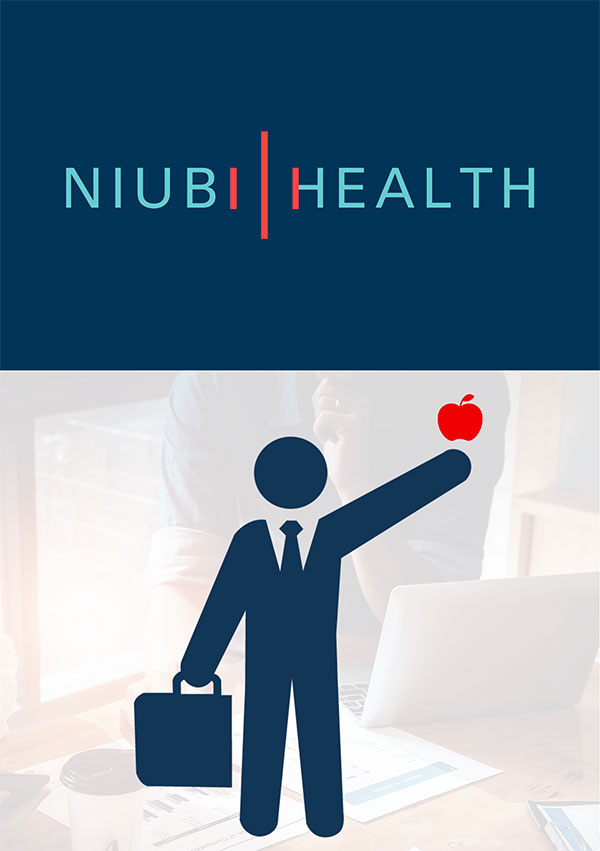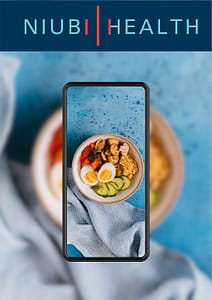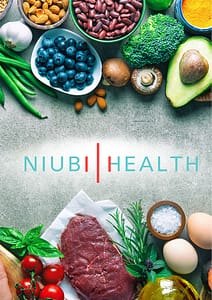Snacking: when bad habits thrive
WORKPLACE NUTRITION: Positively impacting workplace productivity and wellbeing, one meal at a time.
The link between bad eating habits and reduced workplace productivity is often overlooked by employers. Poor workplace nutrition has far reaching effects impacting personal health and safety risks, increased sick leave, metabolic diseases and reduced mental health. There are also the financial knocks companies incur as a result of poor staff nutrition.
In this 4-part series we will shed light on the causes and concerns of poor workplace nutrition and show you how to harness new, healthy eating habits at work. Discover your workplace eating style and endeavor to make the necessary changes to put workplace wellness back into your own hands, and lunchboxes.
Habits: The Need-feed-proceed loop
Habits are defined as “settled or regular practices, especially ones that are hard to give up”.
Bad habits start as negative mental stimuli or triggers. For example stress, boredom, loneliness, anxiety etc.
The body seeks to find relief or comfort from the trigger via physiological or psychological pathways known as cravings. These cravings can include things such as food, social media or even procrastination. Satisfying a craving instead of addressing the trigger head on, forms a habit or loop:
We get stressed (need), we eat sugar (feed), we do this every time (proceed).
It’s the giving-in to the craving that tells the body that the chosen response (eating, for example) is the necessary action to take to cope with the stress. Now a need-feed-proceed loop is created and the habit is formed.
The 4 bad eating habits of workplace nutrition
Snacking
Binge-eating
On the go eating
Starvation
These might seem like 4 independent eating styles but, more often than not, we cycle through more than one of them at work on a regular basis. Let’s find out what these habits look like, why they are bad, and how you can conquer them.
Snacking and beyond
Most of us are all too familiar with the practice of snacking. It is therefore paramount that we identify just how prevalent this habit is and what all the fuss is about.
Snacking is a continual grazing or food-picking habit. It is defined as “small amounts of food eaten between meals”. Note the “between meals” phrase. The essence of snacking is that the body is only partially fed, continuously over time.
Snacking starts when a mental trigger, such as stress or boredom etc, ends up having a physiological effect on appetite/hunger. The most obvious outcome is that we then appease the stress trigger with small eats (snacks) between meals. The consistent giving-in to the trigger with food, forms the bad nutrition habit of snacking. But when a habit becomes a routine, a phenomenon called “appetite memory” settles in.
Appetite memory is just another term for food-conditioning. Appetite memory goes beyond the trigger. No longer a stress response and habit, snacking has now become a conditioning. Hunger is now solely affected and triggered by the routined snacking habit rather than a reaction to a mental trigger. And so, snacking now has become a way of life, with or without any stressors present.
What’s the big deal?
It is not so much the act of snacking that is the great concern, but rather what we snack on that matters most. Body metabolism and appetite is adaptive, which means that the body will adjust to, and crave, what and how it has been trained to eat.
Snacking is characterized by quick, small eats of high energy yield potential. In short: foods that boost stamina, quickly (these are quick, feel-good foods). Carbohydrates and certain fatty snacks predominantly fall into this category. The problem with these food groups are the energy dips caused after consumption. A need to consume more, shortly after, is then created to raise energy levels again. And so the need-feed-proceed loop is enforced.
When carbs and fatty foods are continuously snacked on, the body creates an appetite for these food substrates. In time, the body adapts to expect these food types and so a craving for these foods is created. Hunger pangs have become trained to crave the foods which the body has been continuously fed.
It is the myriad of health concerns associated with the overconsumption of snacks rich in fats and carbs that widens the dilemma of snacking. Left unchecked for too long, snacking could lead to diabetes, obesity, heart disease and many more.
Another factor concerning the dangers of snacking takes us back to our definition: ‘a partial feeding of the body’. If you are only partially feeding the body it implies the body remains undernourished during and after snacking. And the snacks of choice are most commonly high energy foods, empty of nutrients. This exacerbates the onset of nutritional diseases as not only does the body receive the wrong foods but it is also deprived of nutrients that might mitigate the damages caused by snacking in the first place.
Now what?
Habit, conditioning or way of life, snacking is a problem. ‘Just stop snacking’ is hardly helpful advice. Also, it is not always possible to avoid stressors and triggers. So how do we manage this eating habit?
Pre-emptive action is the solution. Removing the snacking habit might not always be possible, but we can prevent the nutritional dangers associated with the wrong types of snacks by being prepared. The more prepared you are in the workplace, the greater your results will be.
Steps to follow:
- Replace snacks with high protein, low fat and low carb options such as beef jerky, mini kebabs, boiled eggs etc. A small feed of lean animal protein can greatly reduce sugar cravings.
- Protein bars. The small amount of sugars in a protein bar will satisfy the sweet lust and also yield a nutrient dense protein snack, ideal for in between meals
- Use safe and approved supplements/ medications that may help reduce appetite and stabilize blood-sugar levels. A good, safe mineral to use is chromium in the form of chromium polynicotinate. Chromium has well documented and measured effects on stabilizing blood sugar by preventing energy dips or crashes between meals.
Always remember to first speak to your healthcare professional before changing your diet or consuming any medication.
- Ensure that high protein meals are eaten at breakfast, lunch and dinner to prevent hunger pangs and cravings in between meals.
- Don’t buy or store high sugar, fatty or refined snack options in your work environment. You can’t eat something if it’s not there.
- Fill up on low carb, low fat, low sugar and reduced caffeine liquids such as instant cup-of-soup, teas, decaf coffee, flavoured waters, coconut water. Avoid fruit juices, dairy and dairy alternatives, stimulants and soft drinks.


